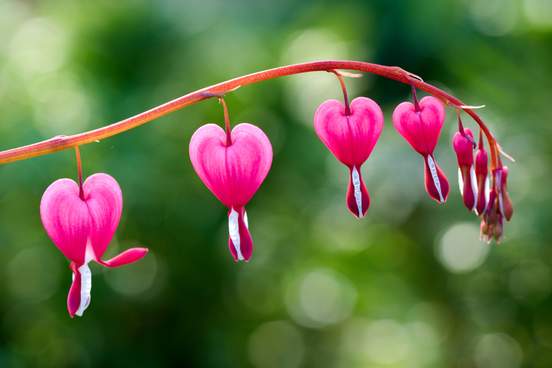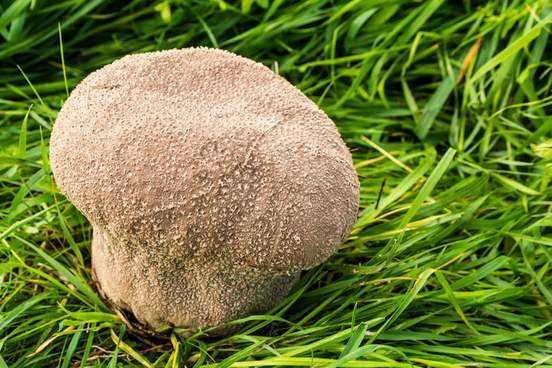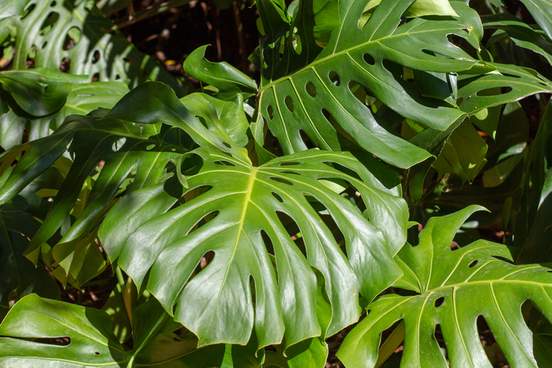
Bleeding Heart
This popular garden plant (Dicentra spectabilis of the fumitory family) is not named for “people who show extravagant sympathy especially for an object of alleged persecution” (sense 2 of bleeding heart). It is named for its usually deep pink or white heart-shaped flowers with a “drip” of petal at the bottom that makes them look like literal bleeding hearts.

Prayer Plant
You may be familiar with a sunflower’s ability to turn and face the sun. Or the Venus flytrap’s response to a bug (or other object) touching the little hairs inside its “mouth”. This property of plant movement is called nastic movement, and here is another plant that has this property: the maranta (Maranta leuconeura of the family Marantaceae), a plant native to Brazil and widely grown as a house plant. Each evening it folds up its leaves like hands coming together to pray, and because of this behavior this plant is also known as a prayer plant.

Puffball
The puffball is any of various globose and often edible fungi (especially family Lycoperdaceae) that discharge mature spores in a smokelike cloud when pressed or struck. And there exists a rather large variety of puffballs, which can grow up to two feet in diameter and weigh 25 pounds or more. What do we call this variety? Why, the giant puffball of course.

Four O’clock
The four o’clock is a garden plant (Mirabilis jalapa) with fragrant yellow, red, or white flowers, which may not sound very special, except that the flowers on this plant don’t open in the morning like many others. They open in the late afternoon, say, about four o’clock. It doesn’t take a deep thinker to figure out why this plant is named four o’clock.

Christmas Cactus
Speaking of plants named after their blooms’ timing, the Christmas cactus, a branching Brazilian cactus (Schlumbergera bridgesii) with flat jointed stems with scalloped margins and showy usually red, pink, white, violet, or yellow flowers, is so named because it flowers annually (that’s once a year) around Christmastime. Two other varieties of cacti are named in this way: the Easter cactus (which tends to bloom in the early spring), and the Thanksgiving cactus (which usually blooms about a month before the Christmas cactus).

Dutchman’s-Breeches
We define this silly-sounding plant as a spring-flowering herb (Dicentra cucullaria) of the fumitory family occurring in the eastern U.S. and having finely divided leaves and cream-white double-spurred flowers. What gives it such a silly name is those cream-white double-spurred flowers: they look just like little upside-down puff-legged pants traditionally worn by dutchmen.

Swiss Cheese Plant
The Swiss cheese plant is a monstera (Monstera deliciosa) of southern Mexico to Panama that is often grown as a houseplant and that has large, glossy, deeply incised or perforated leaves. These large leaves full of holes (sometimes called fenestrations) are what prompted some to start calling it the Swiss cheese plant. The Swiss cheese plant is also known as a split-leaf philodendron but that’s not nearly as interesting a name.






